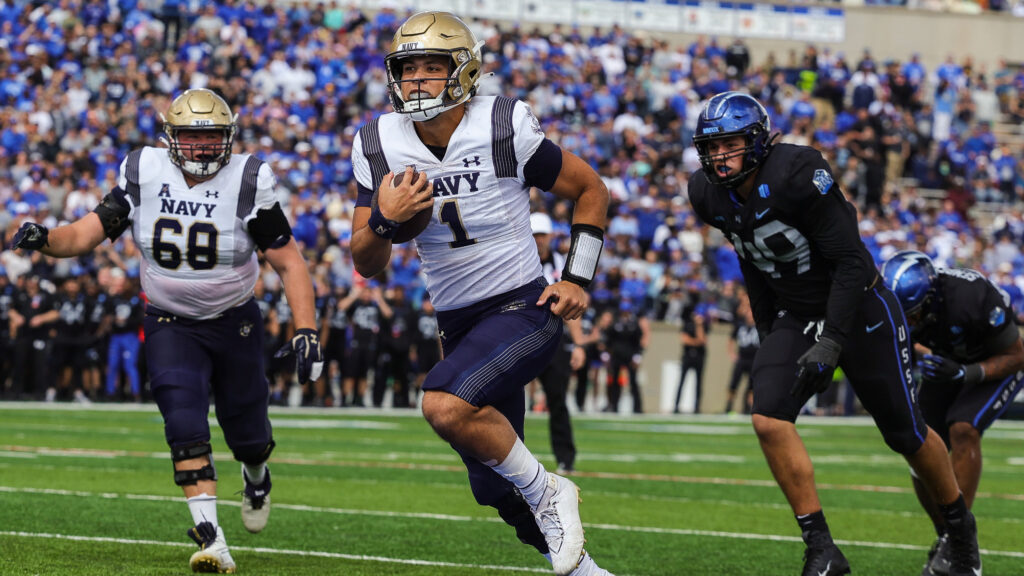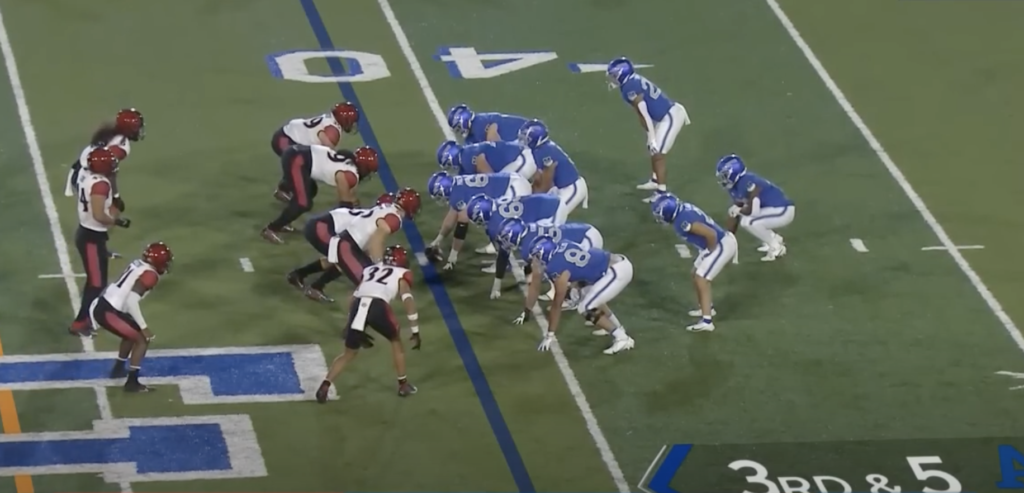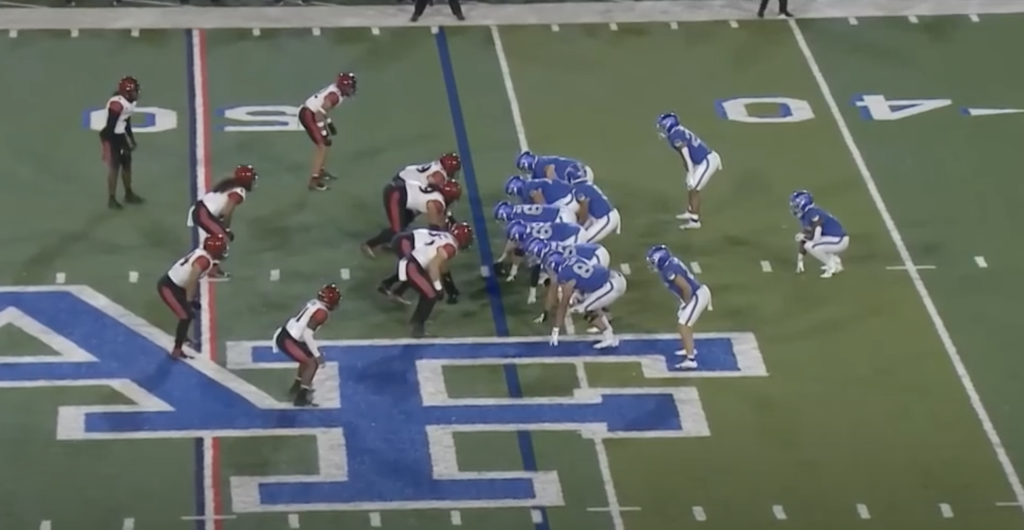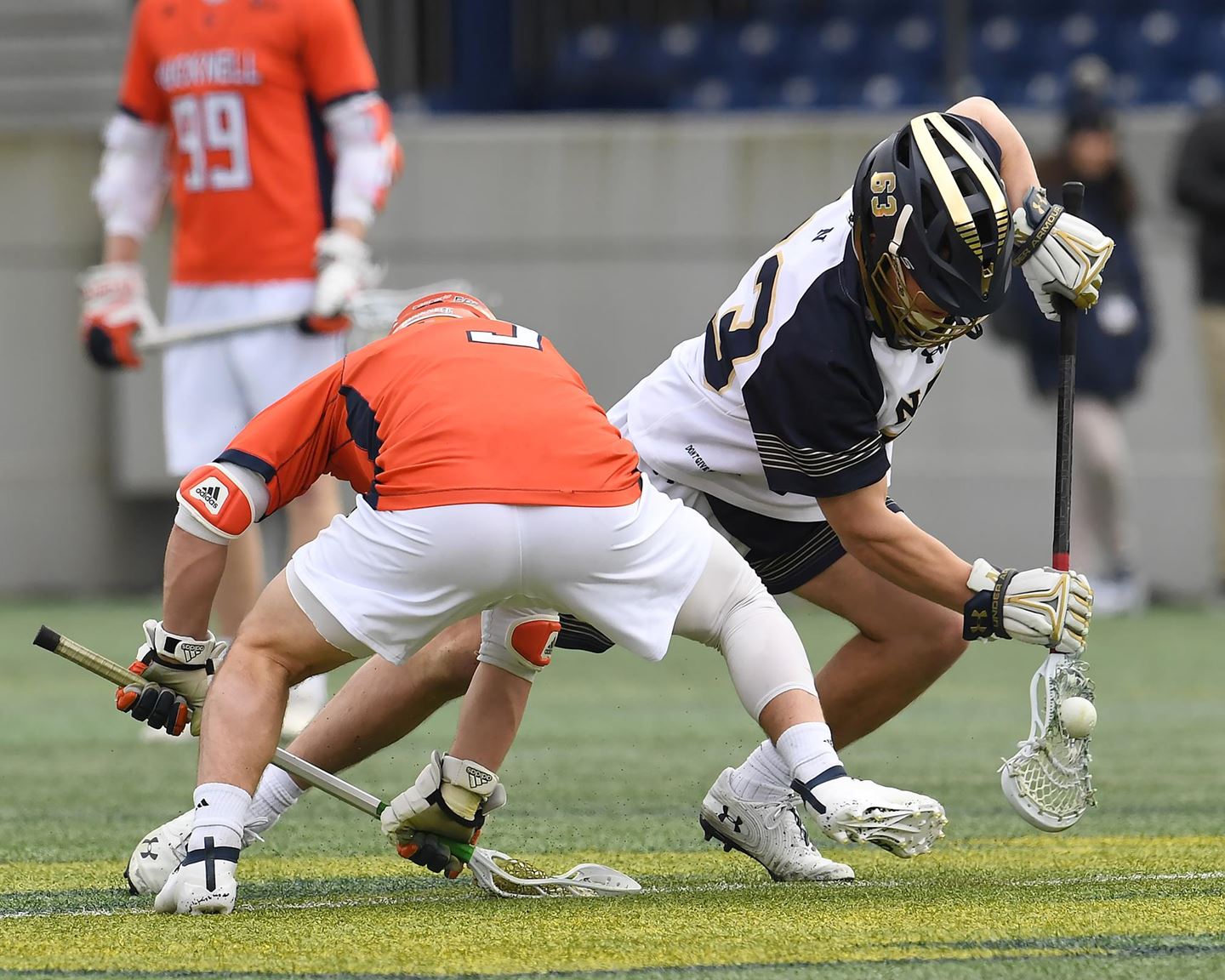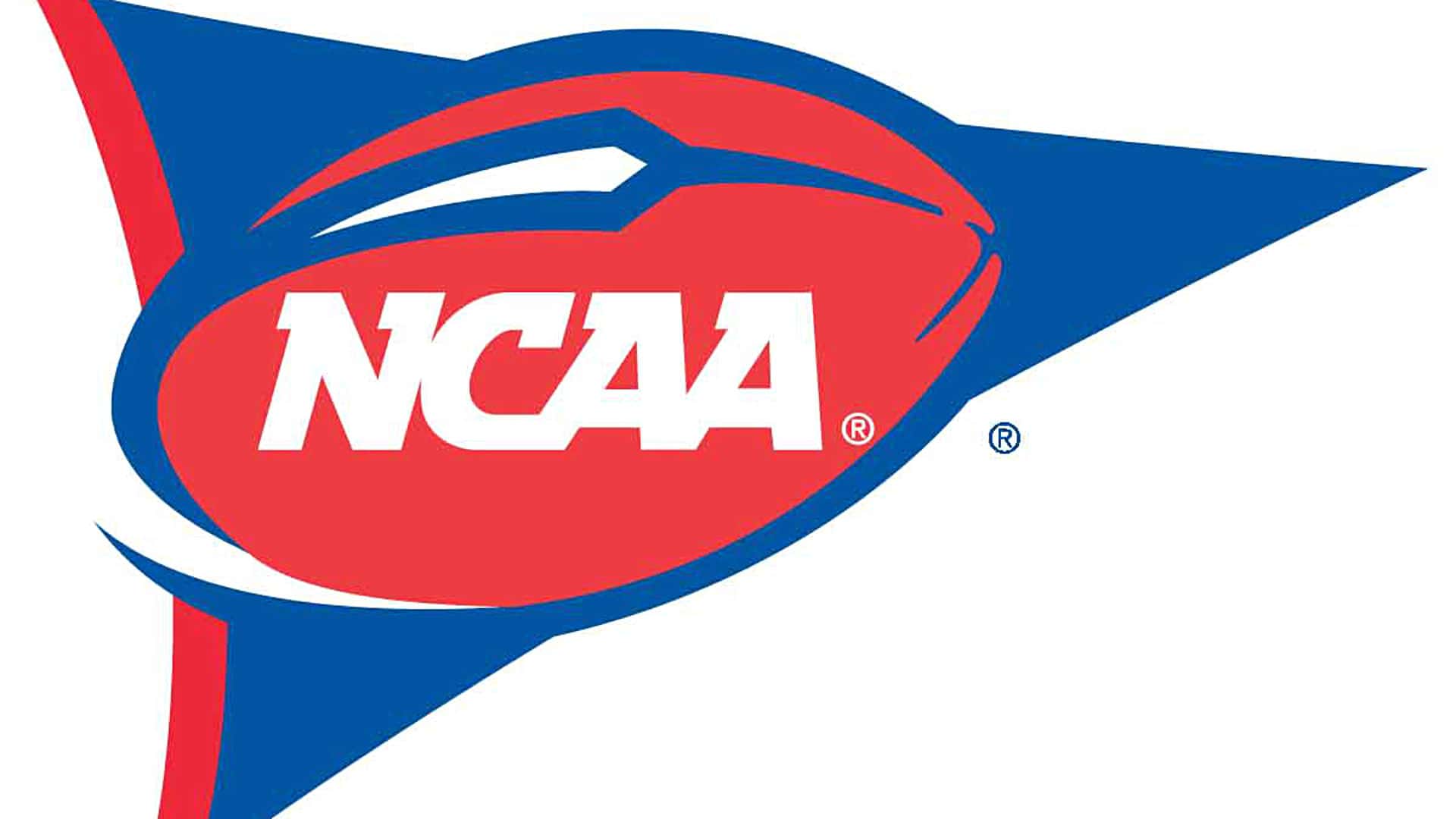Navy vs Air Force Preview
Navy has a huge task facing them this week as they take on the undefeated Air Force Falcons (6-0) at Navy-Marine Corps Memorial Stadium this Saturday. This is your guide to everything you need to know heading into this game including key storylines, matchups, and schematics.
1. QB Situation
Air Force will be coming into this game without their starting QB Zac Larrier who is out for the foreseeable future after he suffered a knee injury in last week’s win against Wyoming.
That leaves Air Force in a very difficult situation as Larrier is the only player on their team to attempt a pass this season. Last week, senior QB Jensen Jones came into the game in relief. He was able to help lift this team to a win over the Cowboys, but also fumbled the ball twice. Jensen has also seen playing time against San Diego State and Robert Morris, but has very limited experience on the year.
Larrier is a huge loss to a really good Air Force team. In a triple option scheme, the QB has such a huge role in offensive success. He’s going to have very limited passing attempts to get in rhythm, but have to hit on almost every opportunity to keep the offense moving. Many of the passing attempts come on third and long as well when the defense knows you’re passing, making it even more difficult. Additionally, even on run plays, the QB typically is deciding where the ball goes and has a high risk of turnovers on the more complicated exchanges with running backs out of this scheme.
Navy is dealing with their own QB situation as senior Tai Lavatai suffered an injury against UNT that kept him out last week against Charlotte. Navy backup Blake Horvath is also out with injury leaving freshman Braxton Woodson as the team’s likely starter coming into this game
Woodson has a lot of potential but flashed some inconsistencies and nerves between bouts of excellent athleticism last week. He has the ability to take this Navy offense to a new level, but is going to have to gain experience fast in order to do so. Head Coach Brian Newberry said this week that he hopes to see Woodson get better as he settles into playing more and gets some of the nerves out. We’ll likely see if that is the case on Saturday.
2. Winning Streaks
This is the first time that Air Force has started the season at 6-0 since 2002. In fact, the Falcons enter this matchup on an 11-game win streak dating back to last season. There is a lot of hype surrounding this team as they are ranked no. 22 in the AP Poll.
Air Force isn’t the only team coming into this game on a winning streak. Yes, Navy has only met the minimum requirements for this category at two straight wins. It is positive momentum however. It is also the first positive signs this season for a team under a new head coach.
While this momentum is minimal, it is something for the Midshipmen to feel confident about heading into one of their biggest games of the season.
3. Air Force Scouting Report
Brian Newberry talked about this Air Force team being simple in their concepts, but chaotic in their presentation. When watching film, this is easy to see. Air Force runs a triple option offense not that dissimilar to Navy. They run this offense out of a lot of different formations however that can put pressure on the defense to adjust play to play. They also have the ability to motion pre-snap as well as get set late and snap quickly to minimize the time the defense has to react to the formation.
Lastly, they can run slightly different alignments out of the same formation. You can see this demonstrated below when they run two nearly identical versions of the flexbone formation.
In both pictures from Air Force’s game against San Diego State, Air Force is lined up in a tight flexbone formation with a tight end attached to the end of the offensive line. In the picture to the left however, you can see that the fullback is lined up just two yards behind the QB instead of three yards in the image on the right. The slot back to the bottom of the picture is also aligned to the inside gap of the tight end in the image to the left, but aligned outside the tight end in the image to the right.
This may seem irrelevant, but these are very intentional decisions by Air Force. The alignment changes their balance towards being able to run certain plays more efficiently. It also changes responsibilities for the defense, particularly in the run game. It seems extremely subtle, but a failure to identify this means a missed assignment and a huge play for Air Force. They’re hoping the defense fails to recognize these subtle differences so they can exploit them for explosive plays.
Formationaly, you’ll see the Falcons run a lot of flexbone and split T formations, traditional triple option alignments. On third and long, they like to go to a shotgun formation with one or more backs to still threaten running some form of an option, but allow for easier access to the passing game.
Offensively, Air Force is a little more committed to the ground game than Navy. Air Force averages 10 more rushing attempts per game than any other team in the country. They run the ball nearly 60 times per game. That’s more rushing attempts than many teams average total plays in a game. Air Force only throws the ball an average of 5 times per game.
On Defense, Air Force is based out of a 3-4, but will run a lot of 4-2-5 to counter spread formations. This defense is designed to disguise what the defense is doing and create confusion for the opposition. Like the offense, they like to mix up their alignments a lot to confuse opposing offenses and disguise coverages and blitzes. They have the ability to run both man and zone coverages effectively.
Two things that stand out for this defense are 1. they struggle some times with missed tackles and 2. the coverage can come and go. Tackling has been a huge issue for Navy this season and Air Force has faced similar problems. They’ve been able to rally to the ball and avoid these turning into huge plays, but it is something they have struggled with that’s led to additional yardage for opposing offenses.
In terms of coverage, there is a level of inconsistency that shows up when looking at this team. Last week against Wyoming, there were a lot of times when defensive backs couldn’t keep up with receivers in the first half. Wyoming players were consistently getting wide open for easy completions. Then in the second half Air Force looked like a completely different team, playing tight coverage. To end the game, when Wyoming was trying to put together a late drive to come back, Air Force ran back to back cover zero blitzes, where they sent more guys than the offense could block to force the ball out quickly. This left defensive backs in one on one man coverage with no safety help. This is the most difficult position for a defensive back to be in, but on both 3rd and 4th down Air Force played extremely tight coverage forcing back to back incompletions.
Coach Newberry talked about how this game will be decided by big plays. Navy will try to make a lot of these big plays through the passing game despite their run heavy offense. What version of the Air Force secondary they get could make a huge difference in the outcome.
4. Navy Keys to Success
It’s more of the same themes from the previous weeks- play disciplined and tackle well. Navy is traditionally one of the least penalized teams in the country but the previous three weeks they’ve taken numerous penalties giving up too many free yards to opponents. Most notably are the procedural penalties- those that Navy has complete control over not committing. Things like false starts and offsides can’t happen this week Navy will have to play more disciplined to stay in the game.
There is one more key to this week’s game- Braxton Woodson settling down the nerves and playing relaxed. Last week, Woodson showed why there was so much hype surrounding his arrival at the Naval Academy. He had some moments of indecision however that led to him holding onto the ball too long. I’m not saying he needs to go out and play reckless, but if he can relax, trust himself, and just focus on playing the game he’s going to go out there the best version of himself and give Navy their best shot of winning.
5. What’s Going to Happen
This game is a really tough one to predict. You have two backup quarterbacks starting, two defenses with some consistency issues, two offenses that run the ball to death, and it’s a rivalry game with a lot of emotions. I expect both teams to come out with some trick plays and wrinkles, particularly in the passing game, to test the opposing defense. I also think that Navy is going to have to sell out to stop the run, especially early in the game before Air Force rolls out some trick plays.
A lot of this game is going to be decided by quarterback play from both sides. I think that Braxton Woodson will be more settled down. But I also think that Jensen Jones for Air Force, being a senior getting an unexpected chance to start a rivalry game, comes in with a great effort.
Air Force comes in as 10-point favorites and has an 80.6% chance to win according to ESPN. But if there was a game that epitomized anything could happen, it’s this Saturday at noon between these two teams.

